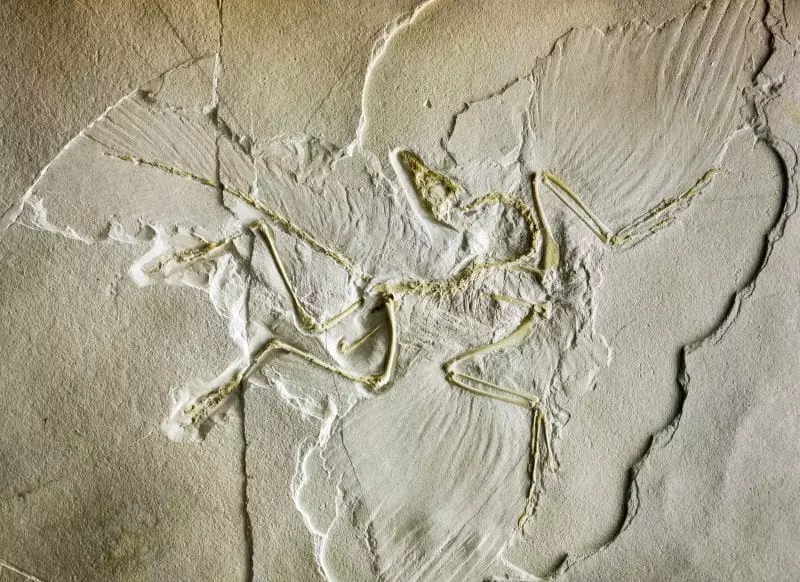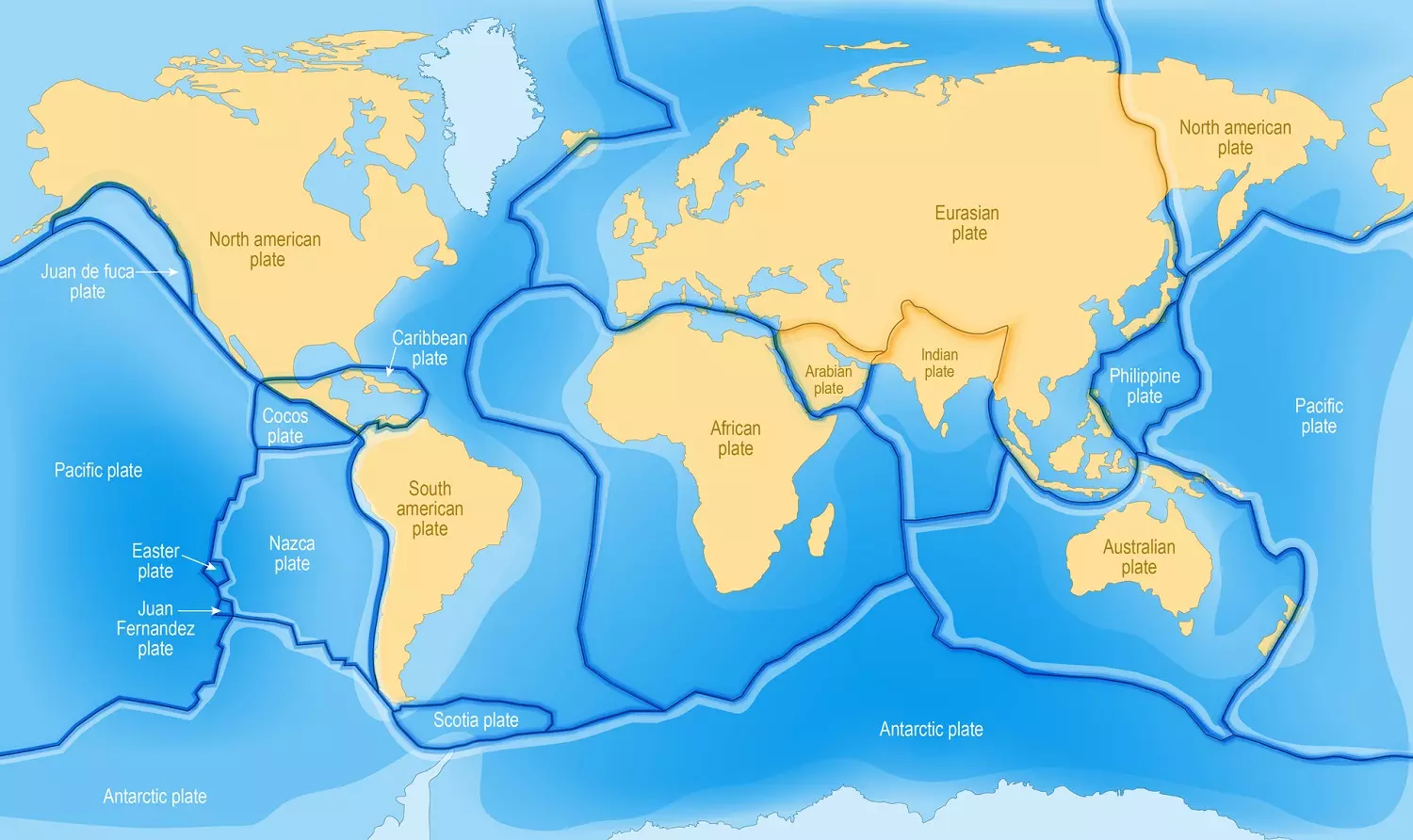[Originally published as part of Life Science]
Chapter 8: Movement of Earth’s Plates—Continental Drift, Pangaea (PP. 283-284, 291)
For the most part, both evolutionists and biblical creationists agree that the earth’s crust is moving, but they greatly differ on exactly how fast such movement occurs. Evolutionary geologists use radiometric dating to suggest that the continents were all in one location as supercontinents hundreds of millions of years ago (800 million years ago in “Rodinia” and 180 million years ago in “Pangaea”). Most creation scientists do not disagree with the concept of Rodinia and Pangaea. Using the dates from Genesis, we can determine that the continents were together at least up to the time of Noah’s Flood, some 4,300 years ago.
And God said, Let the waters under the heaven be gathered together unto one place, and let the dry land appear: and it was so. Genesis 1:9
Current seafloor spreading, magnetic reversals recorded in the seafloor crust, similar rocks and fossils across ocean basins and the puzzle-like fit of continents are evidences that appear to be explainable in slow-and-uniform terms over billions of years. However, these evidences can be better explained by the rapid and catastrophic movement of the plates during the Flood. Computer modeling has shown that the continents could have separated in a matter of weeks, supporting a young age of the earth —millions of years are not required.
The model now adopted by many creation scientists is called catastrophic plate tectonics and is closely related to the Flood. Rather than the slow continental drift suggested by secular geologists, the biblical explanation can be thought of as “continental sprint.” Rather than acting over millions of years to shape the earth’s continents, the originally created continents separated in a matter of weeks, collided, and then separated again during the Flood to arrive at their current positions. This may seem like a radical claim, but computer modeling has demonstrated the feasibility of this model…Not only does this model explain the evidence for plate tectonics, it also provides explanations for the processes involved in the Genesis Flood.
The Bible speaks of the breaking open of the fountains of the great deep and the opening of the windows of heaven as it rained for 40 days and nights (Genesis 7:11-12). As the magma rose to replace the spreading seafloor, it would have produced massive jets of steam carrying large amounts of water high into the atmosphere. This matches the description in the Bible and provides a mechanism to explain where all of the water for the Flood came from.
Another effect would be flooding across the continents. As the hot, lower-density magma rose, the new ocean floor would have floated higher than the original ocean crust, displacing the water and forcing it onto the continents. This explains how marine creatures were deposited in thick and extensive layers across the continents and how fossils of marine organisms wound up on the tops of the mountains (Patterson, 2011).
The secular view of uniformitarian has a great deal of trouble explaining these features and how marine fossils end up on tops of mountains.
Despite claims by uniformitarian scientists that the Bible’s timeline does not allow for enough time to produce the features we see today, explanations from a biblical perspective make sense of the evidence. It is possible to explain the evidence with models based on biblical truths and within the young-earth timeline of 6,000 years. Conclusions depend on starting assumptions.
Creation geologists agree with uniformitarian geologists that the continents were originally grouped together. The Bible suggests this happened at Creation about 6,000 years ago and again during the Flood about 4,300 years ago, while secular scientists believe this happened twice over the last 800 or so million years of earth history. (Patterson, 2011)
Chapter 8: The Geologic Time Scale—The Early Bird Fossil, Archaeopteryx (P. 295)
 Throughout the past century, scientists have been trying to find a fossil of a species with transitional structures in order to demonstrate that Darwinian evolution did occur gradually over time. “If animals have evolved from a common ancestor, there should be a multitude of missing links to demonstrate the gradual changes” (Patterson, p. 99, 2009). “The fraudulent ‘feathered dinosaur’ (Archaeopteryx) that was published in National Geographic is another example of a missing link that has been abandoned” (Patterson, p. 99, 2009).
Throughout the past century, scientists have been trying to find a fossil of a species with transitional structures in order to demonstrate that Darwinian evolution did occur gradually over time. “If animals have evolved from a common ancestor, there should be a multitude of missing links to demonstrate the gradual changes” (Patterson, p. 99, 2009). “The fraudulent ‘feathered dinosaur’ (Archaeopteryx) that was published in National Geographic is another example of a missing link that has been abandoned” (Patterson, p. 99, 2009).
“Many people have tried to say the proof that reptiles evolved into birds is to be found in [Archaeopteryx], which shows claws on its fossilized feathered wings. But all the living birds with claws on their wings are obviously birds!” (Patterson, p. 126, 2009).
Furthermore, the once “prime example of an intermediate form or ‘missing link’ candidate between reptiles and birds—would not qualify as a transitional fossil since its socketed teeth, long bony tail, and wing-claws are all fully-formed structures of its alleged fossil representatives, showing no signs of partial evolutionary development. Without true transitional structures, does the fossil record support or upsettingly contradict the Darwinian view of phyletic gradualism?” (Biddle, p. 109, 2014).
Works Cited:
Patterson, Roger. “Plate Tectonics.” Answers in Genesis. N.p., 10 Feb. 2011. Web. 29 June 2014.
Bassett, David V. “Do Fossils Show Evolution?” Creation V. Evolution. Ed. Daniel A. Biddle. N.p.: Xulon, 2014. 109. Print.
Patterson, Roger Todd. “Natural Selection vs Evolution.” Evolution Exposed. Petersburg, KY: Answers in Genesis, 2009. 99. Print.
Patterson, Roger Todd. “Unlocking the Geologic Record.” Evolution Exposed. Petersburg, KY: Answers in Genesis, 2009. 126. Print.
Digging Deeper:
Video:
Global Tectonics and the Flood Video: https://answersingenesis.org/media/video/science/global-tectonics/
Articles:
- http://www.icr.org/article/continents-didnt-drift-they-raced/
- https://answersingenesis.org/geology/plate-tectonics/plate-tectonics/
- https://answersingenesis.org/geology/reason-5-continental-drift/
- https://answersingenesis.org/geology/plate-tectonics/a-catastrophic-breakup/
- https://answersingenesis.org/kids/geology/kids-feedback-when-god-made-dry-land-was-it-like-pangea/
- http://www.icr.org/article/ocean-circulation-velocities-noahs-flood/
- https://answersingenesis.org/dinosaurs/feathers/did-dinosaurs-turn-into-birds/
- https://answersingenesis.org/missing-links/archaeopteryx-has-flown-the-coop/
- http://www.icr.org/article/early-bird-gets-boot-researchers-reclassify/
- http://www.icr.org/article/transitional-form-archaeopteryx-wont-fly
Books:
The Young Earth by John Morris







When I was in school as a teenager, we were taught in our science class the uniformitarian explanation of continental drift and of the rising and falling of land masses to explain why the mountains of the world are full of MARINE invertebrates like jellyfish, clams and so forth. No one informed us that the entire land surface of the earth today is covered almost completely with sedimentary rock averaging a mile to a mile and a half thick and that marine fossils make up over 99.5% of all the fossils. On the uniformitarian view, we should expect vast portions of the sediment to be full of nothing but fossils of land (and air) organisms that were supposedly above water for hundreds of millions of years, but we find nothing like that. This glaring fact of the fossil record is inexplicable upon uniformitarian grounds but is consistent with a global flood.